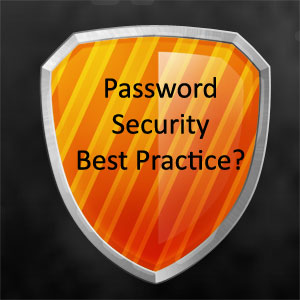With hacking on the rise, the days of businesses getting away with poor password habits are well and truly over. There is significant money in hacking and small and medium sized companies are being targeted just like their bigger counterparts.
Here are a few tips on password security best practice.
1. Create strong passwords
It’s easier than you might think to crack weak passwords. If you don’t use a strong password, your entire business network could be at risk. To create a strong password, follow our simple checklist.
Make sure your password is at least eight characters long and includes a combination of uppercase and lowercase letters, numbers and symbols. You can create strong passwords that are easy to remember with relative ease.
Say for instance you were a bit of a foodie, you could create some food based strong passwords.
The expression “cool beans” could easily be transformed into a strong password C00lB3ans!
“Mashed potato” could become Ma5h3d#P0tat0.
Make sure you avoid the mistakes below when you come up with yours!
2. Avoid these common password mistakes
 There are a number of pitfalls involved when setting passwords. For example, you shouldn’t use your real name, company name, or products in your password. Similarly, you should avoid using complete words from the dictionary. Password cracking software has come a long way and continues to improve. Weak passwords are easily cracked, exposing your network to risk.
There are a number of pitfalls involved when setting passwords. For example, you shouldn’t use your real name, company name, or products in your password. Similarly, you should avoid using complete words from the dictionary. Password cracking software has come a long way and continues to improve. Weak passwords are easily cracked, exposing your network to risk.
Avoid sharing passwords amongst your team. Sharing passwords so openly greatly increases the chances of security breaches.
It’s wise not to use the same password across all of your accounts. If one of your passwords gets cracked, there is the potential for all of your accounts to be hacked.
3. Change your passwords on a regular basis
The longer you keep a password, the more chance there is of compromise. By changing your password every month or so, you minimise the risk of being hacked. The stronger your password, the longer it takes to crack. So changing your password regularly can help to prevent this kind of attack.
A word of warning – it’s dangerous to use an incremental method when choosing a new password. For example, changing from tomdonaldson2011 to tomdonaldson2012 at the end of the year would just about be the worst practice you could engage in.
Stay informed
To keep up with the latest cybersecurity news follow MailGuard on social media; we're on Facebook, Twitter and LinkedIn.
Stay up-to-date with the MailGuard Blog by subscribing to our weekly newsletter. Click on the button below:







